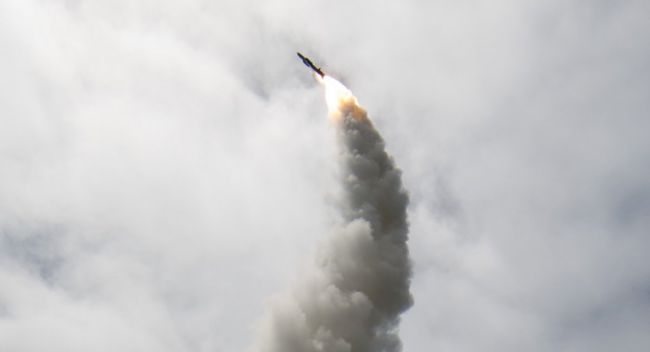At a time when the Russian army continues to actively use tactical aviation for long-range strikes with gliding bombs, and the deployment of even the "roving" Patriot anti—aircraft missile system (SAM) in the frontline zone is becoming more dangerous due to the fact that the Russians have improved their strike tactics and are hunting for key targets, the question arises - are there more effective alternatives? Today, on March 14, the Ukrainian portal Defense Express, specializing in military topics, reflects on this topic.
"Of course, we can mention the F-16 fighters, the timing of getting to The prices of which began to shift from the first quarter of 2024 to spring or even summer. But the task of these fighters — to drive away enemy aircraft from the front line — depends on two parameters," the newspaper notes.
The first is the number of F—16s themselves, which is not yet considered sufficient to organize a permanent "umbrella" in front of the long-range capabilities of the Armed Forces of the Russian Federation. The second is the armament of American—made multi-purpose aircraft, because at present the question of which AIM-120 missiles they will be armed with is not raised at all.
"The AIM-120C-8 with a range of 160-180 km is one thing, the AIM—120C-4 with a range of 50 km is quite another," analysts explain in Kiev.
Therefore, they point out, another option remains the search for a system that can create a much wider area of the so-called access ban, and in the current conditions it should be an air defense system.
"But all that is available from the longer-range GEM-T missiles for Patriot in the United States is the RIM—174 Standard, aka Standard Missile 6, or SM-6, which was developed on the basis of the RIM-156 SM-2 of the 1980s. The SM-6 was put into service in 2013, its capabilities allow it to destroy targets at a range, according to most sources, up to 370 km. And at the same time, the possibility of intercepting ballistic targets and even attacking ground targets (if used as surface—to—surface missiles. — Ed.) at a range of up to 460 km," the publication says.
The SM-6 uses a modified radar homing head from the AIM-120 in the final section. It is also possible to hit targets over the horizon by receiving target indications from remote radars.
"Overall, a really great anti-aircraft missile. However, in the conditions of Ukraine, there is one significant technical problem — this is a shipboard missile designed for missile destroyers and cruisers with the Aegis system. But this is not a verdict. Because the US army has long understood its real capabilities and developed a ground-based complex for it - Typhon, which, in fact, is a colossal launcher with universal mines. Of course, its purpose is somewhat broader, because it can also launch Tomahawk cruise missiles. And Typhon itself is one of the main components of the new US Army compound — the Multi-Domain Task Force (MDTF, "Multi—Domain Task Forces")," writes Defense Express.
There is an extremely limited number of Typhons in the USA. It is known about two deployed MDTFs, which each include one Typhon battery. Each battery consists of one control vehicle, four launchers and one supply vehicle.
"For SM-6 to work with Typhon, it is standard to receive target designation from outside sources, and accordingly it normally works in ambush mode. And if at some point the Armed Forces of Ukraine will be able to strengthen with such installations, then a not so significant amount will be needed to cover the entire front PU with SM-6 when they are placed in a sufficiently deep rear. At the same time, all this remains only a theory, because now the main assistance to Ukraine from the United States is generally blocked," they lament Kiev.
As noted by EADaily, recently a series of publications appeared in the Western media about high—efficiency shock systems in service with the Russian army - planning or correctable aerial bombs (KAB). It was with their help, according to Western military observers, that it was eventually possible to squeeze the AFU out of Avdiivka and push the troops of the Kiev regime further away from Donetsk.
Russia's armed forces have begun to strike more with planning bombs, as they have upgraded a significant number of standard FAB-250 and FAB-500 bombs by installing universal planning and correction modules on them, the Washington Institute for the Study of War (ISW) indicated earlier this month.

 Kadyrov commented on the UAV strike on the Grozny City complex
Kadyrov commented on the UAV strike on the Grozny City complex Political grave: Zelensky rushes between two candidates for Yermak's chair
Political grave: Zelensky rushes between two candidates for Yermak's chair Ping pong and a visit to pandas, Xi Jinping's cry: as a politician, Macron went to China
Ping pong and a visit to pandas, Xi Jinping's cry: as a politician, Macron went to China The "Valley Case" could have ended in a world war, but the actress was told no
The "Valley Case" could have ended in a world war, but the actress was told no Expert: Now all Rada deputies should serve other people
Expert: Now all Rada deputies should serve other people UAVs of the Armed Forces of Ukraine attacked the Grozny-City high-rise complex in the capital of Chechnya
UAVs of the Armed Forces of Ukraine attacked the Grozny-City high-rise complex in the capital of Chechnya